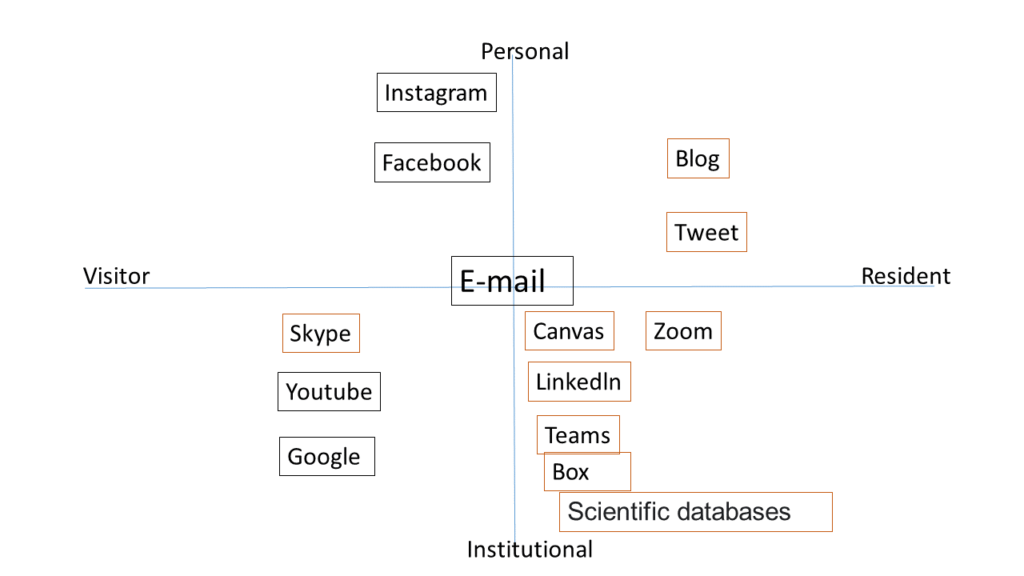Who am I when it comes to digital literacy?
Well, I do not belong to generation Z, adolescents that were born in the 90s, and grew up with the internet. My digital experience began in 2003 when I, as a teacher, started using a digital platform called First Class for distance education. For educational purposes, I have also used the platform It´s learning, and now it is Canvas. The digital communication tool with colleagues and students has primarily been e-mail or Skype. A few years ago, I got Facebook and Instagram accounts for social contact with my friends. That is why I consider myself a digital immigrant in the digital places.
During the 2000s, the TH-program was among the first programs at my university that had distance education, and sometimes I lacked opportunities for technical solutions, such as tools for teaching and exams at a distance. About 10 years ago, a pedagogical development began at the university. Teachers were encouraged to use both synchronous and asynchronous pedagogy so called “blended learning”.
Digital development is very fast, and I think my university is at the forefront when it comes to online pedagogy. Therefore, when restarting the TH-program, it was an easy decision to make that teaching still should be distance learning. I also decided that I needed to study online pedagogy to increase my digital knowledge and digital skills.
Right now, I consider myself more of a visitor than a resident on the internet (White & Le Cornu). New digital tools that I have started to learn are how to write a blog and tweet chat as well as digital tools like Coggle and Miro. This means I am in the bottom of the pyramid of Online participation “I have tried” but is far away from the top of the pyramid there I can call myself “I am an online participator and have a digital identity”. (Beetham & Sharpe 2010)

Questions we discussed in the PBL 13 group and tried to answer:
How to support teachers to aquire digital competence?
How to involve/engage students in online learning?
How to help teachers transision to the Resident/Institutional quadrant?
What are the litteracies needed to engage in digital spaces?
The answers were published using the digital tool Coogle
For Topic 1 PBL 13 used coggle.

You have seen quite a lot of change during your career. Digital development is very fast indeed. However, I tend to think that people have not changed (evolution is not that fast), so luckily many of the good pedagogical principles are equally true in online environment as with “traditional” teaching.